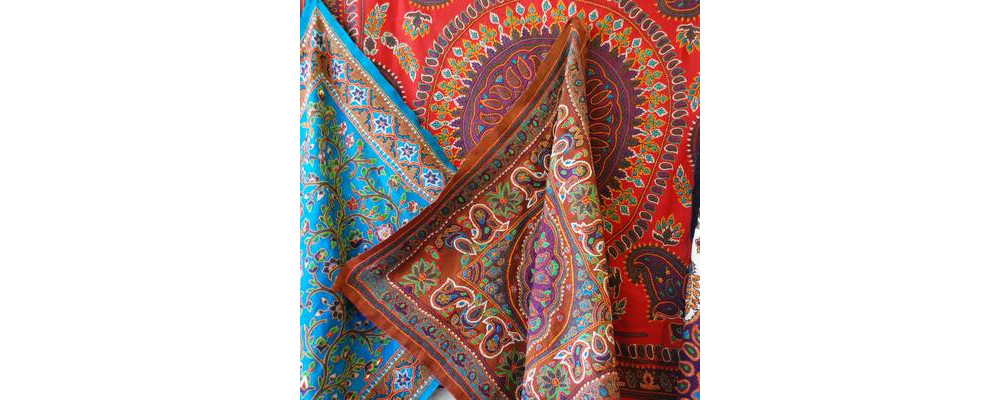
Pateh Douzi of Kerman
Pateh Douzi, also known as “Selseleh Douzi” or “Fateh Douzi” is an important handicraft of Kerman province. Fortunately, this craft is still being practiced and making Patehs is one of the most flourishing trades of Iran. Due to vulnerability of textiles no Pateh product has survived from the ancient times, and very little is known about its history. However, according to travel documentaries and texts that belong to Safavid dynasty, we can be almost certain that Pateh was quite popular in Kerman during that time.
Pateh Douzi, or art of sewing Pateh, is a kind of embroidery in which all over of the textile is covered by colorful stitches. The makers of Pateh are most commonly young girls and women of Kerman who sew the patterns from their own imagination on wide and thick fabrics called “Ariz” or “Shawl”. Ariz is a kind of handmade fabric that in the past was used to make skirts, coats and women overcoats. This fabric is made by textile machinery, both manual and automatic, in colors such as red, yellow, white, blue and green. “Ris” or the yarn that is used in Pateh is a wool yarn that was handspun in the past but today it is spun by machines. Traditionally the yarns are dyed with colors such as burgundy, black, light or dark green, yellow, orange, red, dark blue and etc., but new colors have been added to Pateh color palettes. In the past, Golabatoon and silk yarns were used, too.
One of the oldest surviving pieces of Pateh, which belongs to 1869, was used as the cover of Shah Nimatullah Wali’s tombstone. This work is a great and elaborate sample of this craft. Sixteen skillful women of Kerman worked for two years and applied this Pateh by stitching colorful silk yarns on a cream wool fabric. One of the traits of Pateh which adds to its beauty and delicacy is the traditional motif of tree of life or “Boteh Jegheh”, paisley. It is one of the most popular Iranian motif.
Today Pateh is most common in cities such as Kerman, Sirjan and Rafsanjan, and is used to make tablecloth, cover of holy Quran, curtains, cushions, bed covers, decorating parts of clothing and traditional dolls. Pateh has long been considered a part of dowry of young girls of Kerman and this is one of the reasons why it has kept thriving until today.